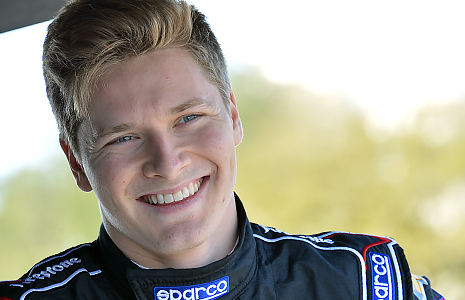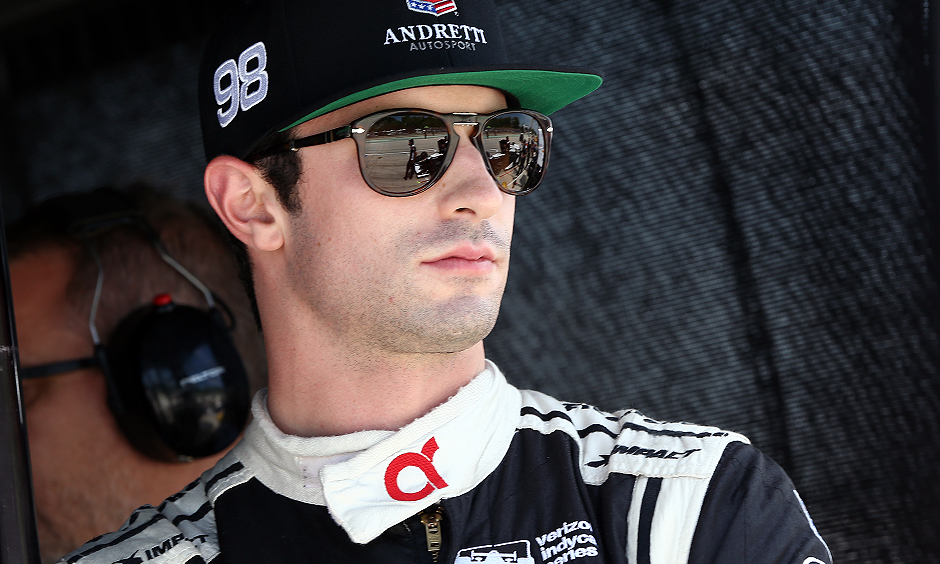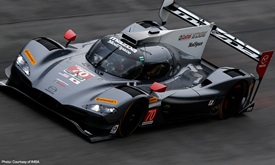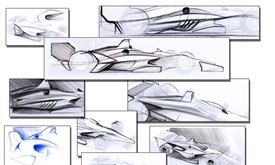New Indy car aerodynamics will get to ‘bottom’ of downforce issue
JAN 13, 2017
DETROIT – Of course, a pretty face is important. Jay Frye, INDYCAR president of competition and operations, is the first to admit that. But looks aren’t everything.
That’s why work began long ago on bodywork for the 2018 Verizon IndyCar Series that will cover the Dallara IR-12 chassis. That body and universal aero kit will serve through 2020. To get it wrong is not an option.
During a media roundtable Thursday at the North American International Auto Show, which also included Verizon IndyCar Series drivers Josef Newgarden and Alexander Rossi, winner of the 100th Indianapolis 500, Frye offered the first glimpse, both in words and concept illustrations, of the 2018 car’s look. To say it was well-received is an understatement.
“I’m just delighted with the feedback,” Frye said. And it isn’t just the presumed slightly retro look, it was mechanics of the design, which made Frye even happier. Rossi and Newgarden pointed out that the current car – with separate aero kit bodywork from Chevrolet and Honda, both of which are frozen for 2017 – tends to generate most of its downforce from the top of the car surface, largely with wings and spoilers.
 “One of the things I really liked hearing from Jay is that what drivers have been screaming about for a long, long time – that we want more ‘bottom-side’ performance from the race car. We don’t want to just rely on the top,” said Newgarden (pictured at left), who finished fourth in the 2016 championship with Ed Carpenter Racing and joins Team Penske for 2017.
“One of the things I really liked hearing from Jay is that what drivers have been screaming about for a long, long time – that we want more ‘bottom-side’ performance from the race car. We don’t want to just rely on the top,” said Newgarden (pictured at left), who finished fourth in the 2016 championship with Ed Carpenter Racing and joins Team Penske for 2017.
“I like how prominent the floor is,” said Rossi (pictured above). “That bottom-side downforce will be a priority.”
Meaning what? Rossi, driver of the No. 98 Andretti-Herta Autosport Honda, explained.
“It’s when we’re trying to follow closely and you get to a point where the racing kind of seems stagnant because nobody is really getting closer (to the car directly ahead). It’s because the car behind us is so affected by the air, because it’s going over the top of it. It’s what we call ‘dirty air,’ meaning it’s moving, and it’s not a flat surface, which is what the car was designed (to encounter).
“When you’re relying on downforce coming from the bottom, you’re not as affected by turbulence or dirty air, because the state that air is in is irrelevant when it hits the floor.
“That part,” Rossi emphasized, “is massively encouraging.”
But will it work? So far, so good, Frye said. This concept design project began last April and there has been one wind tunnel test using a model of the new car that was “overwhelmingly” favorable, he said.
“We have a way to go, but we’re definitely in the ballpark,” Frye said.
The timeline calls for a more fully-realized design to show before the first race of the season, which is less than two months away, and the first on-track test this summer.
As expected, aside from aero and aesthetics, the new design addresses safety as well.
“We are looking at a wind screen or a halo-type application,” Frye said, referring to additional head protection considerations. “We’re full speed ahead designing and developing as soon as possible.”
There could even be one application for street and road courses, another for ovals. All that, and a pretty face, too?
“I think it looks awesome,” Rossi said. “It takes us back to kind of the glory days, I think, which is the direction the sport is heading, and the Verizon IndyCar Series is only progressing forward. Hats off for what they’ve come up with and I look forward to driving it in the near future.”



















